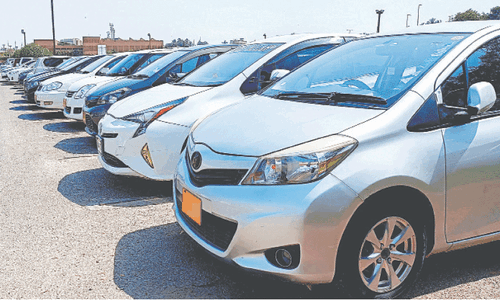 KARACHI, July 15: Driving past the marble factories that dot the road, one pulls up, covered in dust, to a shrine perched atop a slight hillock.
KARACHI, July 15: Driving past the marble factories that dot the road, one pulls up, covered in dust, to a shrine perched atop a slight hillock.
From the shrine emanate drum beats that grow louder as you get closer, jostling past little girls in their Sunday best, athletic Baloch youths sporting English premier league football jerseys and an assortment of others.
Once you reach the top of the hillock, a heady mix of incense, rose, sandalwood and sweat greets you; the drummers are beating in unison as the dancers, both male and female, ecstatically sway to the beat. The dhammal is in full flow.
In the adjacent mazar chamber the mood is a little more sombre, as people offer fateha and other prayers in the hopes that the entombed saint will intercede with the Almighty on their behalf, for today is the first day of Hazrat Sakhi Sultan Baba Manghopir’s urs, which lasts four days and four nights.
The annual Sheedi Mela at Karachi’s Manghopir shrine, located in Gadap Town, has become one of the city’s most enduring and mysterious cultural events.
What sets apart the Manghopir festival is that it is mostly patronised by Sindh and Balochistan’s Sheedi community and, of course, the 200 or so crocodiles that bask in a pond at the foot of the shrine.
The legend
There is little reference material on the history of the shrine and even less on the person who lies buried within. Most of what is known about the shrine is folklore. The most popular legend states that the man who is today revered as a spiritual master was a Hindu highwayman named Mangho who gave up his wayward ways after a rendezvous with revered 12th century Chishty Sufi master Hazrat Baba Fariduddin Masood Ganj-i-Shakar.
Whatever the veracity of these legends, one thing is clear: the Manghopir Mela serves as perhaps the key event on the Sheedi community’s cultural calendar. It reflects the community’s African origins, with the type of drumming performed in the dhammal clearly reminiscent of African tribal rhythms, while some have observed that the attachment to the crocodiles harks back to the crocodile worship cults of Africa.
However, Mohammad Yaqoob Qambrani, a Sheedi community leader, who also serves as a drummer during the dhammal, plays down the crocodile worship link.
“These are the lice of Baba Farid. Through a miracle they were turned into crocodiles. Our rituals are associated with the Ghouria Sufi silsila, which is a branch of the Chishtiya silsila. The mela also used to happen during British times,” he says.
Though clearly proud of his traditions, Qambrani considers Manghopir’s annual mela, which is supposed to happen before the monsoon season, the last vestige of traditional Sheedi culture.
Before leaving the mela, a visit to the crocodiles is a must, who are profusely fed whole chickens and other choice cuts of meat, as people hope that pleasing the reptiles will ensure their wishes are granted.—QAM
































